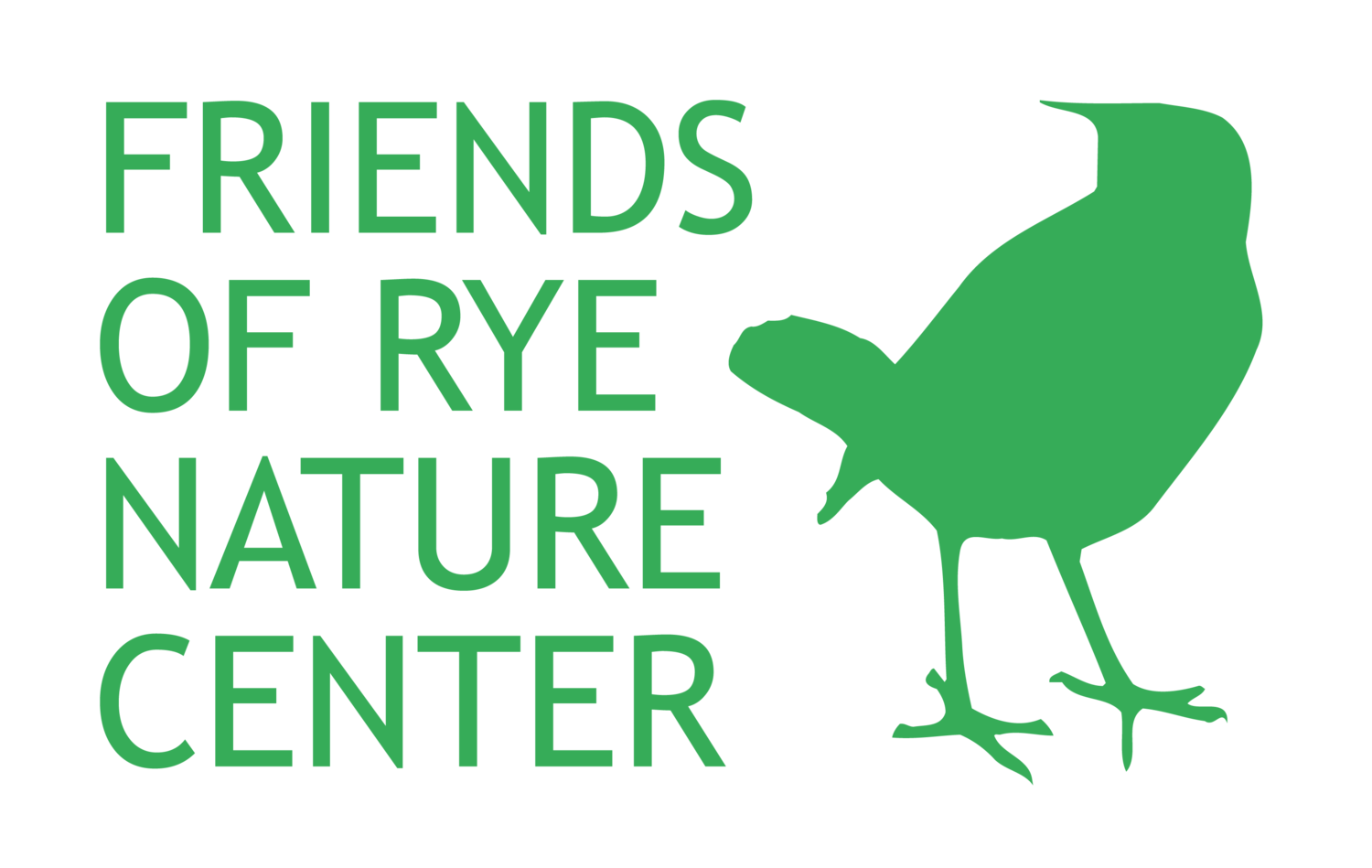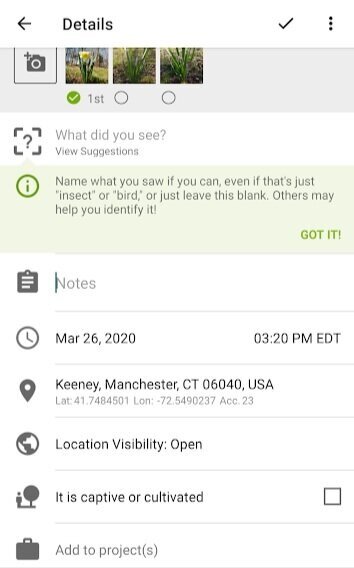iNaturalist is an excellent learning tool for amateur and veteran naturalists alike! This app allows users to take pictures of observations, record audio, and choose from a variety of suggested species. Your observations are then available for others to see and confirm or deny the identification. iNaturalist draws from various databases, allowing it to catalog and identify plants, animals, fungi, mushrooms, and protists (i.e. slime molds). The great thing about iNaturalist is you can us it to identify plants and animals you find anywhere you go!
Our project, “Biota of Rye Nature Center and Preserve,” catalogs discoveries that staff and visitors have already made at the Nature Center. It’s a great place start to see what you may find on your next visit! Check out "Biota of Rye Nature Center and Preserve" on iNaturalist.
how to use inaturalist: Step by step guide
Step One
Download the free iNaturalist app to your smart phone from your Apple or Android app store and create an iNaturalist account using an email address and secure password.
Step two
Make observations! Observations can be of any living thing around you. Use iNaturalist to share or help you identify your discovery.
To make a new observation click the camera button on an iPhone or the + button on an Android. You can also upload previously taken pictures or audio recordings from your phone’s gallery.
STEP THREE
Take photos (from multiple angles if possible) or record sounds using the camera icon in the top left corner. When sharing observations of landscaped plants, please mark them as “captive or cultivated.”
The when and where fields should get filled in automatically. If this doesn’t happen, check your app permissions/privacy in your phone’s settings.
STEP FOUR
Try to identify what you saw. Press “What did you see?” for a list of suggestions based on appearance and what is typically found in your location. Look through the suggestions and select the closest fit.
It’s okay if you’re not an expert. You can narrow your observation down to a category from the appropriate biological kingdom — this can be as simple as “insect” or “bird”.
Even if you’re not sure what you’ve seen, other users will be able to view your observation and make suggestions. With two or more positive identifications your observation will become research grade and further respected by the citizen science community!
STEP FIVE
Observations should be automatically included in our collection based on its geo-tag but if you make an observation while at the Rye Nature Center, please share to our “project.” Under the Projects tab, search for “Biota of Rye Nature Center and Preserve.” Press “join” to become part of the project. You can select this project when identifying an organism spotted on the RNC property or edit an old observation to mark it as part of the project. This allows you to explore the observations made by others at the Nature Center!
In addition to being an excellent learning opportunity, iNaturalist is an important citizen science tool that engages the public in observing the natural world. By increasing the amount of accurate data collected, studies become more effective and conservationists are able to advance their projects.
STEP SIX
Use the Explore option to see what other people in your area have been observing. You can also look up a specific organism to see where it has been spotted nearby and view observations on a map. Have fun familiarizing yourself with your local biota!










